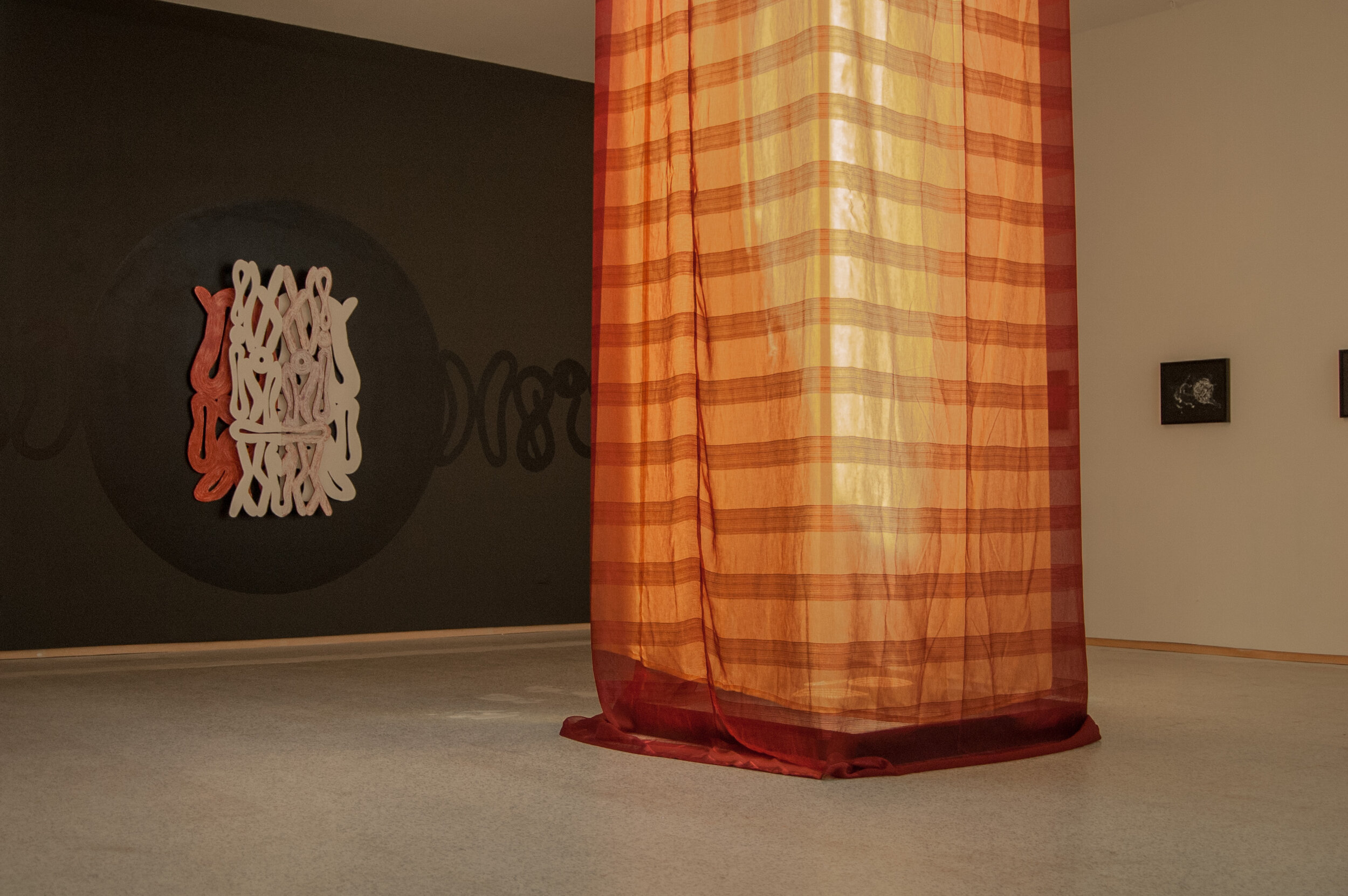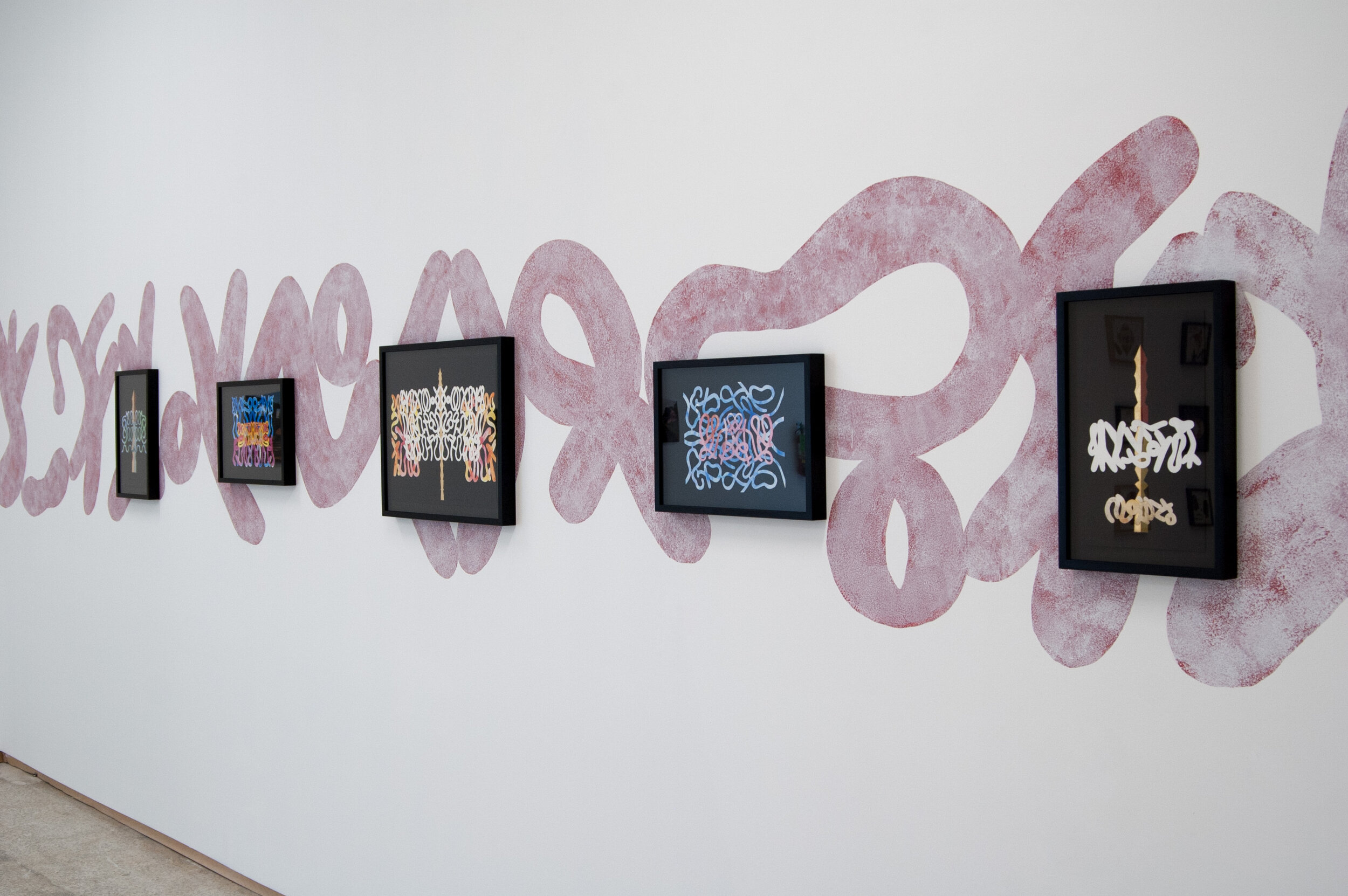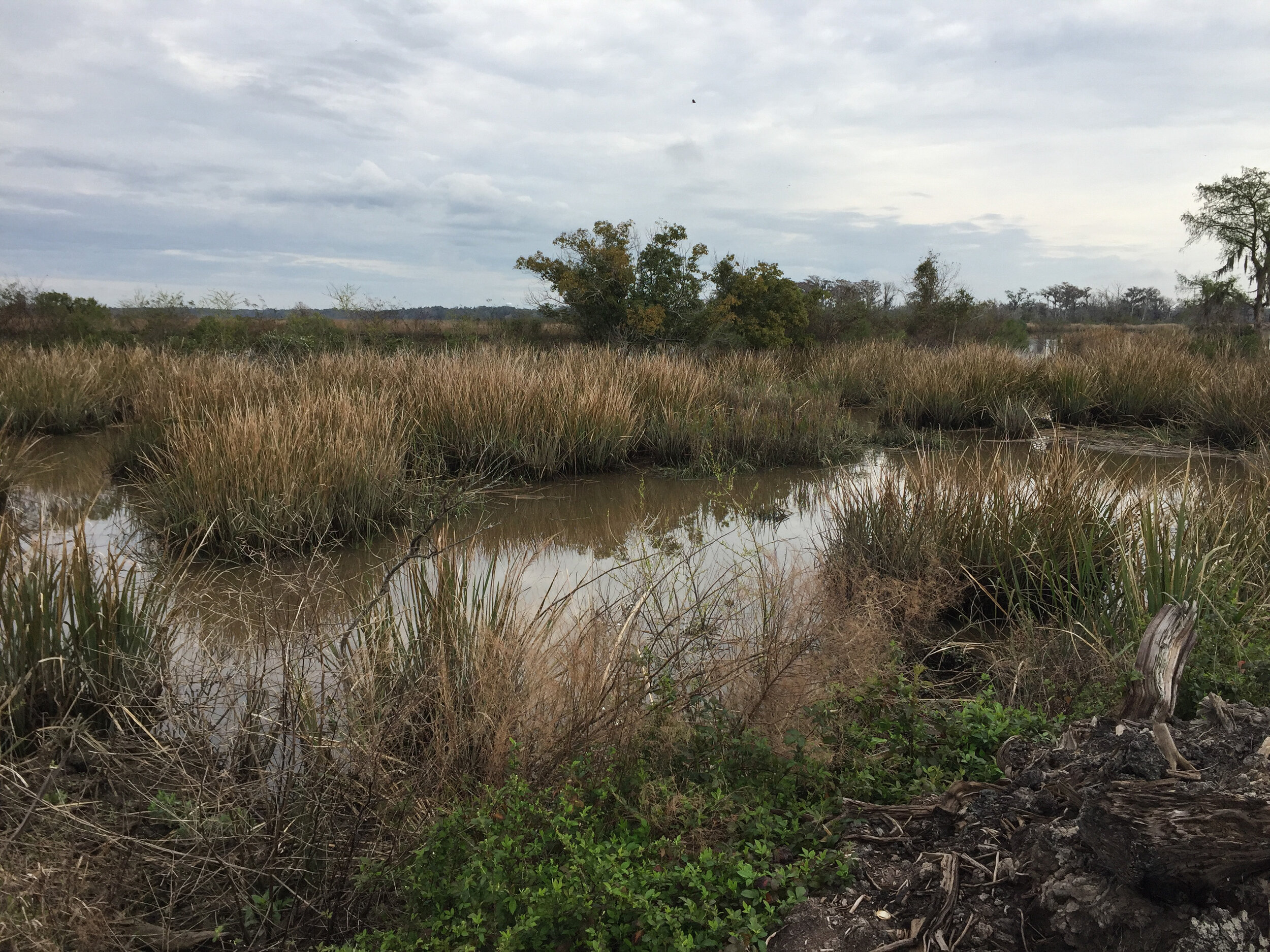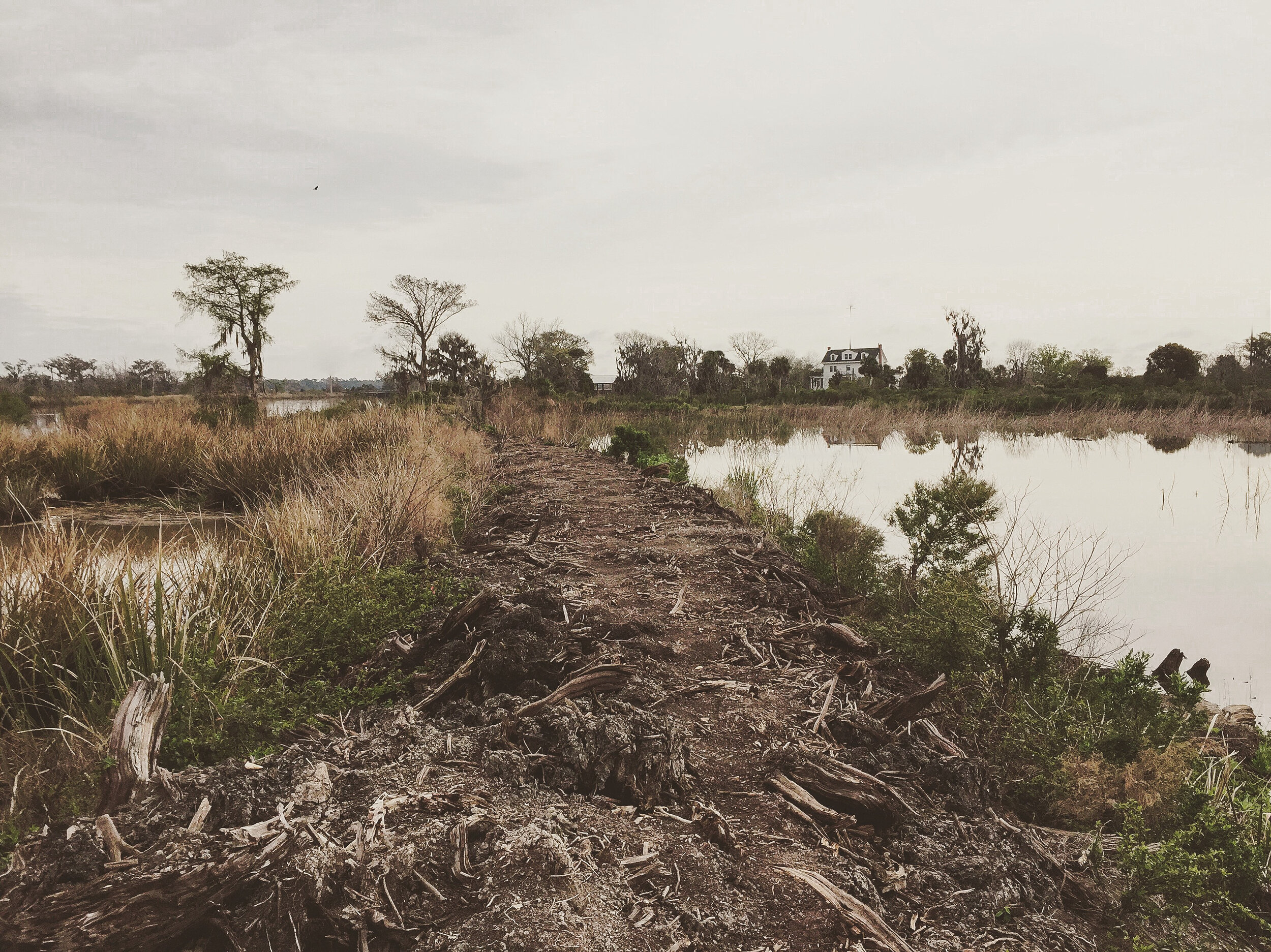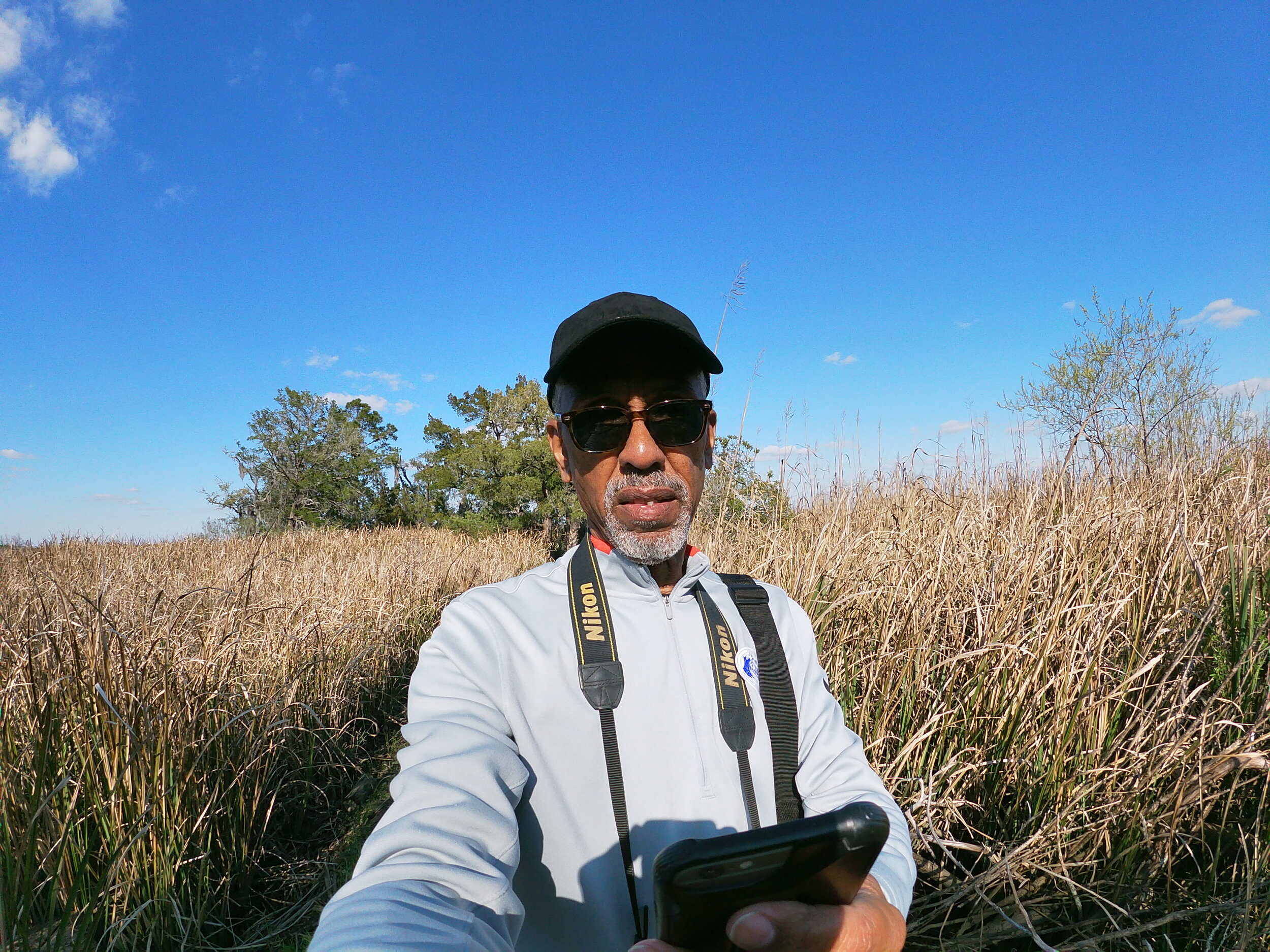WaveMaker Grantee: Onajide Shabaka
Written by Locust Projects and Onajide Shabaka
Interview with the Artist
Tell us about your WaveMaker project:
My project, “Alosúgbe,” really began in earnest while I was in Suriname with Diaspora Vibe Cultural Arts Incubator’s International Cultural Exchange program and returned to do a one month residency there in 2017. I applied for a Wavemaker Grant to assist with investigating the colonial rice cultivation area along the Georgia tidewater for comparative data. I was awarded my grant in two parts, one part for research and one part for implementation.
I visited the David M. Rubenstein Rare Book & Manuscript Library at Duke University in North Carolina to research the archive of Louis Manigault who owned Gowrie, a rice plantation on Argyle Island in the Savannah River delta. Argyle Island is inaccessible today and is part of the Savannah National Wildlife Refuge, part of the tidewater saltmarshes which cover an environment on both sides of the Georgia/ South Carolina border. (It’s also called the Lowcountry.) The archive contained some chilling and sobering information but one of the most chilling was the cholera epidemic that took the lives of many of the enslaved laborers in 1834 and again in 1854. A second thing was the Gowrie Plantation (Argyle Island) also had a horrific enslaved child mortality rate. 90% of the children died before they reached age 16.
After the two visits to Georgia I produced two letterpress prints with Tom Virgin (Extra Virgin Press) and had a solo exhibition at Emerson Dorsch Gallery in 2019, and a solo exhibition at The Studios of Key West, January, 2020. The exhibitions included photographs, drawings, collage works on paper and sculpture. Emerson Dorsch also had a gallery talk between myself and Dr. Edmund Abaka, Ph.D., University of Miami. I had unmilled rice shipped to me from Suriname for the exhibition from ReadyTex Gallery, Paramaribo, Suriname.
The most recent phase of the project was a two week residency in Brunswick, Georgia during the final two weeks of February, 2020 that allowed me to do more site specific investigating and focus on photographing the landscape. Almost every day I was at a different location mostly along U.S. Route 17, part of the Gullah/Geechee Cultural Corridor where many former rice plantations were built. Sites were explored with my long established walking practice.
What was the easiest aspect of this project? What was the most challenging? Did you learn something new? What do you wish you had done different? What went perfectly?
The Wavemaker Grant is what has made this project flow smoothly. Without funding it would have likely never happened in this depth. In the process of researching archives, site specific visits in Georgia and Suriname I have been astonished in what I am learning: about those sitting at the U.S. Constitutional Congress (rice planters that became wealthy by employing enslaved laborers); the preservation and scientific research on the landscape of today; and oral histories of formerly enslaved people and their descendants. Similar information was gathered during my Suriname residency and comparing the two has been quite enlightening.
In the big picture most everything happened as planned. The only exception was visiting Argyle Island which does not have a road to reach the former plantation housing area. As an alternative, I visited Butler Island Plantation which now encompasses the Altamaha River Wildlife Management Area. Major Butler was part of the U.S. Constitutional Congress and had one of the largest enslaved labor populations in the U.S. (along with Louis Manigault).
Tell us what you're most excited about as a result of this project? Has it inspired a new work, collaborations, directions? Has it brought new opportunities through other grants or exhibitions? What, where and when? Tell us more...
The project is ongoing and every day something new is being learned and integrated into it. While I generally create alone, no art project on this scale could get done without the assistance and collaborative efforts of others for whom I thank. In order to realize some of the larger concepts of the project financial support will have to be found. It’s always difficult to find financing and this moment it is impossible. I was rewarded with a few opportunities to share my work during 2019 for which I am grateful: Emerson Dorsch Gallery and Art & Culture Center of Hollywood. Who knows what the future holds? I think it is important to return to Suriname to share what I’ve been working on. I was in the process of planning a return trip until the world quarantine. So, we will just have to stay positive about the future and continue to work.
In one sentence - what one thing about doing this project will stay with you?
The one thing that will stay with me is that I was gratefully awarded funding for my project, had project support, and honored that others believed in my art practice.
ABOUT THE ARTIST
Onajide Shabaka (born 1948 Cincinnati, OH. Lives in Miami, FL) builds origin stories with artworks that are at once delicate and immense. Arrowhead shaped columns and serpentine designs are delicately hand cut and painted and collaged onto stiff paper. His practice is concerned with historical/biographical themes related to geography that include African diaspora and Native American cultures. Using ethnobotany, geology and the performative as aesthetic vehicles for investigating and making historical/ biographical themes, his art practice comes into being through complex institutions, histories, human experiences. Shabaka’s writing and curatorial practice focuses largely on contemporary art and culture, and subject-specific research.
Shabaka studied at California College of the Arts and received his MFA from Vermont College of Fine Arts. He has shown his work in solo exhibitions in Miami, Fort Lauderdale, Houston, TX and Potsdam, Germany, among others. His work has been included in numerous group shows over the years, including exhibitions at Project Row Houses In Houston, TX, PRIZM Art Fair in Miami, Museum of Contemporary Art of North Miami, Edna Manley College of the Arts in Kingston, Jamaica, Wayne State University in Detroit, MI and Emerson Dorsch in Miami, to name a few. He has been the recipient of numerous grants and awards, including, recently, The Ellies, a public sculpture commission for the Carrie Meeks Foundation building in Opa Locka, FL, in addition to his 2019 Wavemaker Grant. Full CV at EmersonDorsch.com
Onajide Shabaka received a Cycle 5 WaveMaker Grant in 2019. Since 2015, WaveMaker Grants have awarded $399,000 in grants to 77 Miami’s most visionary artists, collectives, and curators.
WaveMaker Grants at Locust Projects is made possible by lead support from the Andy Warhol Foundation for the Visual Arts and is part of the Warhol Foundation's Regional Regranting Program. Part of a national network of Warhol-initiated regranting programs, WaveMaker Grants is the first in the southeast. For more information about the Warhol Foundation's Regional Regranting Program, please click here.


